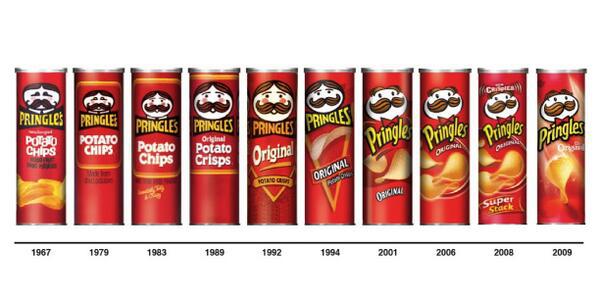Pringles History
Pringles were initially sold in 1967 and became nationally distributed across the US in 1975, and internationally from 1991 onwards. P&G wanted to create a perfect chip to address consumer complaints about broken, greasy, and stale chips, as well as air in the bags. The task was assigned to chemist Fredric Baur, who, from 1956 to 1958, created Pringles’ saddle shape from fried dough, and the can to go with it. Baur could not figure out how to make the chips taste good and he eventually was pulled off the Pringles job to work on another brand. In the mid-1960s, another P&G researcher, Alexander Liepa of Montgomery, Ohio, restarted Baur’s work, and set out to improve on the Pringles taste, which he succeeded in doing. While Baur was the true inventor of the Pringles chip, Liepa's name is on the patent. Gene Wolfe, a mechanical engineer-author known for science fiction and fantasy novels, developed the machine that cooks them. Their consistent saddle shape is mathematically known as a hyperbolic paraboloid. Their designers reportedly used supercomputers to ensure that the chips' aerodynamics would keep them in place during packaging.
There are several theories behind the origin of the name "Pringles". One theory refers to Mark Pringle, who filed a US Patent 2,286,644 titled "Method and Apparatus for Processing Potatoes" on 5 March 1937. Pringle's work was cited by Procter & Gamble (P&G) in filing their own patent for improving the taste of dehydrated processed potatoes. Another theory suggested two Procter advertising employees lived on Pringle Drive in Finneytown (north of Cincinnati, Ohio), and the name paired well with potato. Another theory says that P&G chose the Pringles name from a Cincinnati telephone book.
They were originally known as "Pringles Newfangled Potato Chips", but other snack manufacturers objected, saying Pringles failed to meet the definition of a potato "chip". The US Food and Drug Administration weighed in on the matter, and in 1975, they ruled Pringles could only use the word "chip" in their product name within the following phrase: "potato chips made from dried potatoes". Faced with such an unpalatable appellation, Pringles eventually opted to rename their product potato "crisps" instead of chips. This later led to other issues in the United Kingdom, where the term potato "crisps" refers to the product Americans call potato "chips".
In April 2011, P&G agreed to the $2.35 billion sale of the brand to Diamond Foods of California, a deal which would have more than tripled the size of Diamond's snack business. However, the deal fell through in February 2012 after a year-long delay due to issues over Diamond's accounts. On 31 May 2012, Kellogg Company officially acquired Pringles for $2.695 billion as part of a plan to grow its international snacks business. The acquisition of Pringles makes Kellogg the second-largest savory snacks company in the world.
Pringles are manufactured in factories in Jackson, Tennessee; Mechelen, Belgium; Johor, Malaysia; Kutno, Poland, Fujian, China.
Source: Wikipedia

Congratulations @bongiu! You received a personal award!
You can view your badges on your Steem Board and compare to others on the Steem Ranking
Vote for @Steemitboard as a witness to get one more award and increased upvotes!